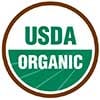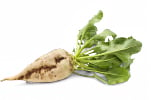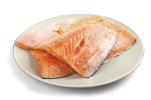One thing that we say time and time again....EAT LOCAL.
Our lives revolve around food. We nourish our bodies with it, but we also celebrate, entertain and express affection with it. So it’s no surprise that we all want the healthiest, freshest, best-tasting food. To serve the best—and trigger other positive effects on the economy, the soil, wildlife and the welfare of those who raise what we eat—here are 8 reasons to shop for local foods:
- It’s better for everyone’s bottom line When we shop for local foods, we get the satisfaction of knowing that we are contributing to our local communities and economies. For example, research out of Brock University suggests $3 billion would be added to the local economy if 5 million Ontarians spent $10 of their grocery budget on local foods each week. You don’t always spend more to shop for local food; in some cases it can cost less because in-season foods are generally cheaper and travel costs are minimized.
- It supports the future of farming The stronger our local farmer gets, the more we ensure local goods can be grown and raised for generations to come.
- It promotes biodiversity Our demand for local food creates greater variety. Farmers who run community-supported agriculture programs, sell at farmers’ markets and provide for local restaurants have the support they need to raise more types of produce and livestock than multinational commercial enterprises looking to squeeze every dollar out of one type of crop.
- It promotes cultural diversity Many local farmers are growing varieties of “culturally diverse” ingredients locally so traditional recipes from different heritages can still be honored and prepared—fresh—close to home.
- It empowers consumers Shopping locally gives us a chance to engage our growers directly. Building a relationship with farmers is fun—who doesn’t love a trip to the farmers’ market! We get to learn something new about our food, including when the freshest produce is in-season. And we are reassured when we ask growers directly about sustainable production, including whether pesticides are used. It’s important to ask about growing practices because buying local does not automatically mean the food is sustainably produced.
- It promotes a greater sense of family When we buy local foods, we are encouraged and inspired by our food. Who doesn’t spy a brimming basket of apples and think, “homemade apple pie!” We hit the kitchen, whipping up favorite family recipes and applying our creative juices. And then, we get to savor the bounty with loved ones, enjoying the experience slowly, talking about the effort and the end result (rather than wolfing down pre-made reconstituted food with the TV on!).
- It boosts our well-being Of course, when local foods are grown sustainably, using humane animal practices and without pesticides and chemical fertilizers, we can also be confident that our food is healthier and environmentally friendly. So every time you buy food grown in your region, you can feel good knowing you are making a difference.
- It tastes better! Finally, local foods taste better because they are in-season, recently harvested and didn’t have to travel far to get to our plates.
Here is a great farm that was recommended by someone that we trust.
4 Gen Farm is your local source of tasty, wholesome food for your family. Know where your food comes from!
Know where your food comes from!
Know your farmer!
They are 4 generations working together, working with the land, and natural relationships (soil enrichment, water, animals, companion plants) in a transparent, responsible, trustworthy manner to provide wonderful, tasty, clean, nutritious food for local families.
Contact Information
Phone: (743) 439-7674
Get Directions:







































.png)

 Option 1: Buy organic. National and state organic certification rules do not allow genetically engineered foods to be labeled “organic.” When you buy organic, you buy food free not only of synthetic pesticides but also GE ingredients.
Option 1: Buy organic. National and state organic certification rules do not allow genetically engineered foods to be labeled “organic.” When you buy organic, you buy food free not only of synthetic pesticides but also GE ingredients. Option 2: Buy food certified as “Non-GMO Project Verified.” The non-profit organization Non-GMO Project operates a detailed, voluntary certification process so that food producers can test and verify that, to the best of their knowledge, they have avoided using GE ingredients in their products. The Non-GMO Project is the only organization offering independent verification for GMO products in the U.S. and Canada (Non-GMO Project 2014). (GMO stands for “genetically modified organism,” a term interchangeable with “genetically engineered” or “GE.”)
Option 2: Buy food certified as “Non-GMO Project Verified.” The non-profit organization Non-GMO Project operates a detailed, voluntary certification process so that food producers can test and verify that, to the best of their knowledge, they have avoided using GE ingredients in their products. The Non-GMO Project is the only organization offering independent verification for GMO products in the U.S. and Canada (Non-GMO Project 2014). (GMO stands for “genetically modified organism,” a term interchangeable with “genetically engineered” or “GE.”)

